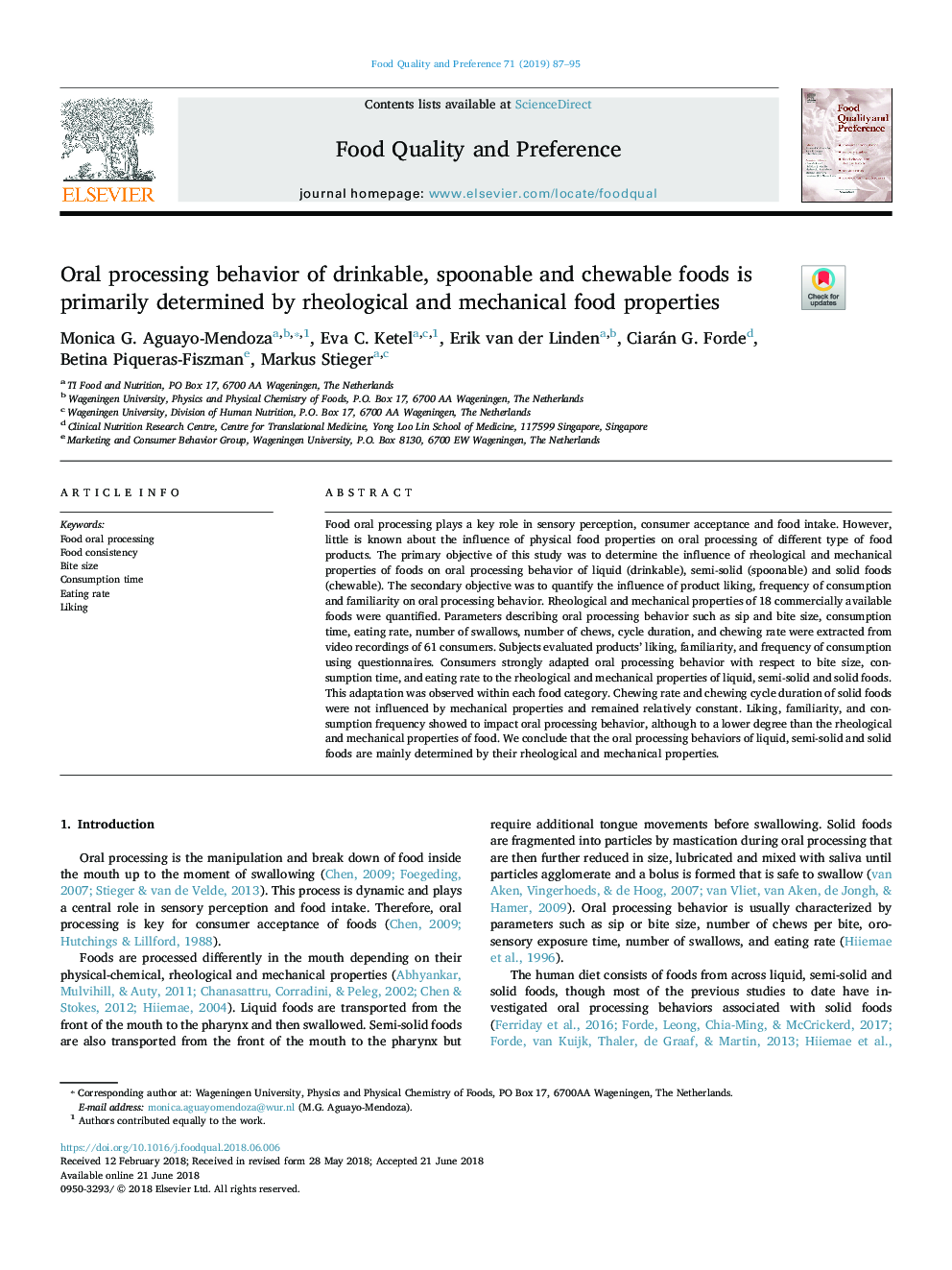| Article ID | Journal | Published Year | Pages | File Type |
|---|---|---|---|---|
| 8838355 | Food Quality and Preference | 2019 | 9 Pages |
Abstract
Food oral processing plays a key role in sensory perception, consumer acceptance and food intake. However, little is known about the influence of physical food properties on oral processing of different type of food products. The primary objective of this study was to determine the influence of rheological and mechanical properties of foods on oral processing behavior of liquid (drinkable), semi-solid (spoonable) and solid foods (chewable). The secondary objective was to quantify the influence of product liking, frequency of consumption and familiarity on oral processing behavior. Rheological and mechanical properties of 18 commercially available foods were quantified. Parameters describing oral processing behavior such as sip and bite size, consumption time, eating rate, number of swallows, number of chews, cycle duration, and chewing rate were extracted from video recordings of 61 consumers. Subjects evaluated products' liking, familiarity, and frequency of consumption using questionnaires. Consumers strongly adapted oral processing behavior with respect to bite size, consumption time, and eating rate to the rheological and mechanical properties of liquid, semi-solid and solid foods. This adaptation was observed within each food category. Chewing rate and chewing cycle duration of solid foods were not influenced by mechanical properties and remained relatively constant. Liking, familiarity, and consumption frequency showed to impact oral processing behavior, although to a lower degree than the rheological and mechanical properties of food. We conclude that the oral processing behaviors of liquid, semi-solid and solid foods are mainly determined by their rheological and mechanical properties.
Related Topics
Life Sciences
Agricultural and Biological Sciences
Food Science
Authors
Monica G. Aguayo-Mendoza, Eva C. Ketel, Erik van der Linden, Ciarán G. Forde, Betina Piqueras-Fiszman, Markus Stieger,
